Quantum phases and topological properties of interacting fermions in one-dimensional superlattices
The realization of artificial gauge fields in ultracold atomic gases has opened up a path towards experimental studies of topological insulators and, as an ultimate goal, topological quantum matter in many-body systems. As an alternative to the direct implementation of two-dimensional lattice Hamiltonians that host the quantum Hall effect and its variants, topological charge-pumping experiments provide an additional avenue towards studying many-body systems. Here, we consider an interacting two-component gas of fermions realizing a family of one-dimensional superlattice Hamiltonians with onsite interactions and a unit cell of three sites, whose groundstates would be visited in an appropriately defined charge pump. First, we investigate the grandcanonical quantum phase diagram of individual Hamiltonians, focusing on insulating phases. For a certain commensurate filling, there is a sequence of phase transitions from a band insulator to other insulating phases (related to the physics of ionic Hubbard models) for some members of the manifold of Hamiltonians. Second, we compute the Chern numbers for the whole manifold in a many-body formulation and show that, related to the aforementioned quantum phase transitions, a topological transition results in a change of the value and sign of the Chern number. We provide both an intuitive and conceptual explanation and argue that these properties could be observed in quantum-gas experiments.
Eigenstate thermalization and quantum chaos in the Holstein-polaron model
David Jansen, Jan Stolpp, Lev Vidmar, Fabian Heidrich-Meisner, Phys. Rev. B 99, 155130 (2019), arXiv:1902.03247
The eigenstate thermalization hypothesis (ETH) is a successful theory that provides sufficient criteria for ergodicity in quantum many-body systems. Most studies were carried out for Hamiltonians relevant for ultracold quantum gases and single-component systems of spins, fermions, or bosons. The paradigmatic example for thermalization in solid-state physics are phonons serving as a bath for electrons. This situation is often viewed from an open-quantum system perspective. Here, we ask whether a minimal microscopic model for electron-phonon coupling is quantum chaotic and whether it obeys ETH, if viewed as a closed quantum system. Using exact diagonalization, we address this question in the framework of the Holstein-polaron model. Even though the model describes only a single itinerant electron, whose coupling to dispersionless phonons is the only integrability-breaking term, we find that the spectral statistics and the structure of Hamiltonian eigenstates exhibit essential properties of the corresponding random-matrix ensemble. Moreover, we verify the ETH ansatz both for diagonal and offdiagonal matrix elements of typical phonon and electron observables, and show that the ratio of their variances equals the value predicted from random-matrix theory.
Finite-temperature properties of interacting bosons on a two-leg flux ladder
Quasi-one-dimensional lattice systems such as flux ladders with artificial gauge fields host rich quantum-phase diagrams that have attracted great interest. However, so far, most of the work on these systems has concentrated on zero-temperature phases while the corresponding finite-temperature regime remains largely unexplored. The question if and up to which temperature characteristic features of the zero-temperature phases persist is relevant for ultracold quantum-gas experiments. We investigate a two-leg ladder lattice in a uniform magnetic field and concentrate our study on chiral edge currents and momentum-distribution functions, both key observables that are experimentally accessible. These quantities are computed for hard-core bosons as well as non-interacting bosons and spinless fermions at zero and finite temperatures. We employ a matrix-product-state based purification approach for the simulation of strongly interacting bosons at finite temperatures and analyze finite-size effects. Our main results concern the vortex-fluid-to-Meissner crossover of strongly interacting bosons. We demonstrate that signatures of the vortex-fluid phase can still be detected at elevated temperatures from characteristic finite-momentum maxima in the momentum-distribution functions, while the vortex-fluid phase leaves weaker fingerprints in the local rung currents and the chiral edge current. In order to determine the range of temperatures over which these signatures can be observed, we introduce a suitable measure for the contrast of these maxima. The results are condensed into a finite-temperature crossover diagram for hard-core bosons.
Topological charge pumping in the interacting bosonic Rice-Mele model
A.L.C. Hayward, C. Schweizer, M. Lohse, M. Aidelsburger, F. Heidrich-Meisner, Phys. Rev. B 98, 245148 (2018), arXiv:1810.07043
We investigate topological charge pumping in a system of interacting bosons in the tight-binding limit, described by the Rice-Mele model. An appropriate topological invariant for the many-body case is the change of polarization per pump cycle, which we compute for various interaction strengths from infinite-size matrix-product-state simulations. We verify that the charge pumping remains quantized as long as the pump cycle avoids the superfluid phase. In the limit of hardcore bosons, the quantized pumped charge can be understood from single-particle properties such as the integrated Berry curvature constructed from Bloch states, while this picture breaks down at finite interaction strengths. These two properties -- robust quantized charge transport in an interacting system of bosons and the breakdown of a single-particle invariant -- could both be measured with ultracold quantum gases extending a previous experiment [Lohse et al., Nature Phys. 12, 350 (2016)]. Furthermore, we investigate the entanglement spectrum of the Rice-Mele model and argue that the quantized charge pumping is encoded in a winding of the spectral flow in the entanglement spectrum over a pump cycle.
Large magnetic thermal conductivity induced by frustration in low-dimensional quantum magnets
Jan Stolpp, Shang-Shun Zhang, Fabian Heidrich-Meisner, Cristian D. Batista, Phys. Rev. B 99, 134413 (2019), arXiv:1809.08429
We study the magnetic field-dependence of the thermal conductivity due to magnetic excitations in frustrated spin-1/2 Heisenberg chains. Near the saturation field, the system is described by a dilute gas of weakly-interacting fermions (free-fermion fixed point). We show that in this regime the thermal conductivity exhibits a non-monotonic behavior as a function of the ratio $\alpha = J_2/J_1$ between second and first nearest-neighbor antiferromagnetic exchange interactions. This result is a direct consequence of the splitting of the single-particle dispersion minimum into two minima that takes place at the Lifshitz point $\alpha = 1/4$. Upon increasing $\alpha$ from zero, the inverse mass vanishes at $\alpha = 1/4$ and it increases monotonically from zero for $\alpha \geq 1/4$. By deriving an effective low-energy theory of the dilute gas of fermions, we demonstrate that the Drude weight $K_{\rm th}$ of the thermal conductivity exhibits a similar dependence on $\alpha$ near the saturation field. Moreover, this theory predicts a transition between a two-component Tomonaga-Luttinger liquid and a vector-chiral phase at a critical value $\alpha = \alpha_c$ that agrees very well with previous density matrix renormalization group results. We also show that the resulting curve $K_{\rm th}(\alpha)$ is in excellent agreement with exact diagonalization (ED) results. Our ED results also show that $K_{\rm th}(\alpha)$ has a pronounced minimum at $\alpha \simeq 0.7$ and it decreases for sufficiently large $\alpha$ at lower magnetic field values. We also demonstrate that the thermal conductivity is significantly affected by the presence of magnetothermal coupling.
Non-Equilibrium Mass Transport in the 1D Fermi-Hubbard Model
S. Scherg, T. Kohlert, J. Herbrych, J. Stolpp, P. Bordia, U. Schneider, F. Heidrich-Meisner, I. Bloch, and M. Aidelsburger, Phys. Rev. Lett. 121, 130402 (2018), arXiv:1805.10990
We experimentally and numerically investigate the sudden expansion of fermions in a homogeneous
one-dimensional optical lattice. For initial states with an appreciable amount of doublons, we observe a dynamical phase separation between rapidly expanding singlons and slow doublons remaining in the trap center, realizing fermionic quantum distillation in the strongly-interacting limit. For initial states without doublons, we observe a suppressed interaction dependence of the asymptotic expansion speed compared to bosons, which is traced back to the interaction energy produced in the quench.
Quantum phases of strongly interacting bosons on a two-leg Haldane ladder
Sebastian Greschner and Fabian Heidrich-Meisner, Phys. Rev. A 97, 033619 (2018), arXiv:1710.08109
We study the ground-state physics of a single-component Haldane model on a hexagonal two-leg ladder geometry with a particular focus on strongly interacting bosonic particles. We concentrate our analysis on the regime of less than one particle per unit cell. As a main result, we observe several Meissner-like and vortex-fluid phases, both for a superfluid as well as a Mott-insulating background. Furthermore, we show that for strongly interacting bosonic particles, an unconventional vortex-lattice phase emerges, which is stable even in the regime of hard-core bosons. We discuss the mechanism for its stabilization for finite interactions by a means of an analytical approximation. We show how the different phases may be discerned by measuring the nearest- and next-nearest-neighbor chiral currents as well as their characteristic momentum distributions.
Many-body localization of spinless fermions with attractive interactions in one dimension
We study the finite-energy density phase diagram of spinless fermions with attractive interactions in one dimension in the presence of uncorrelated diagonal disorder. Unlike the case of repulsive interactions, a delocalized Luttinger-liquid phase persists at weak disorder in the ground state, which is a well-known result. We revisit the ground-state phase diagram and show that the recently introduced occupation-spectrum discontinuity computed from the eigenspectrum of one-particle density matrices is noticeably smaller in the Luttinger liquid compared to the localized regions. Moreover, we use the functional renormalization scheme to study the finite-size dependence of the conductance, which resolves the existence of the Luttinger liquid as well and is computationally cheap. Our main results concern the finite-energy density case. Using exact diagonalization and by computing various established measures of the many-body localization-delocalization transition, we argue that the zero-temperature Luttinger liquid smoothly evolves into a finite-energy density ergodic phase without any intermediate phase transition.


